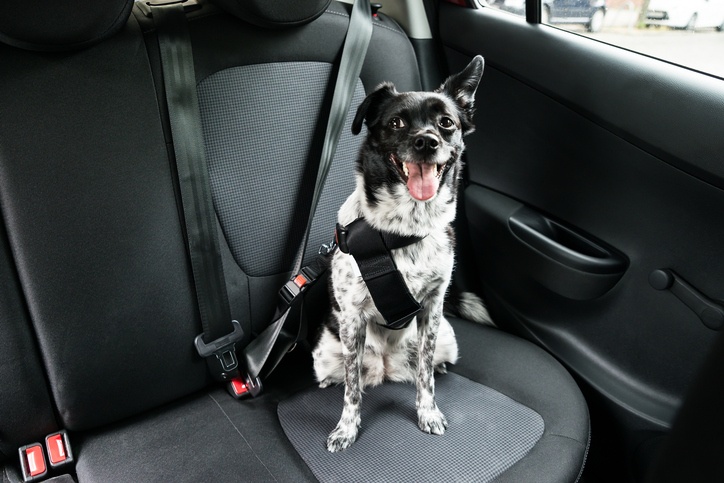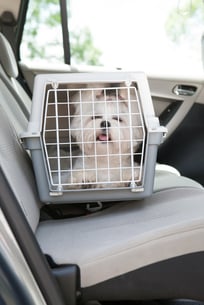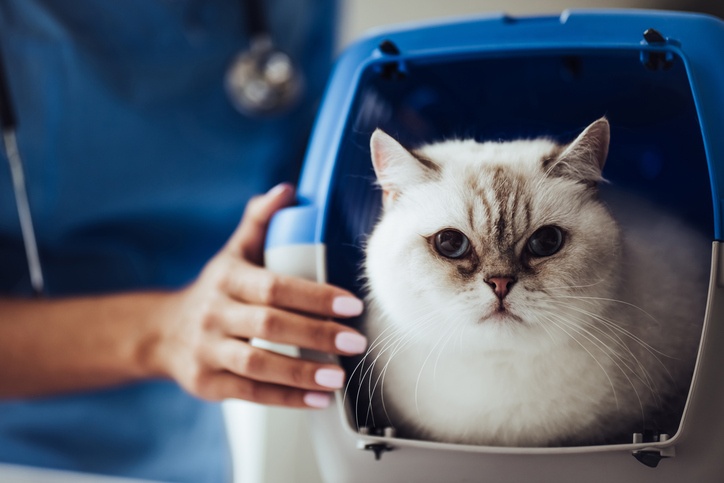 According to the American Pet Products Association, 68 percent of U.S. households — 84.6 million — share their home with one or more companion animals. A survey by AAA and Kurgo Pet Products revealed that 84 percent of respondents regularly drive with their companion animals for a variety of outings from veterinary visits to road trips. Well-intentioned consumers may not think twice about safety before loading Simba into the car and heading out on the road. Veterinary offices can help protect pawed patients by educating clients on proper vehicle safety precautions and guidelines. Below, the CrossCheck editorial team has provided key discussion points.
According to the American Pet Products Association, 68 percent of U.S. households — 84.6 million — share their home with one or more companion animals. A survey by AAA and Kurgo Pet Products revealed that 84 percent of respondents regularly drive with their companion animals for a variety of outings from veterinary visits to road trips. Well-intentioned consumers may not think twice about safety before loading Simba into the car and heading out on the road. Veterinary offices can help protect pawed patients by educating clients on proper vehicle safety precautions and guidelines. Below, the CrossCheck editorial team has provided key discussion points.
Driving Dangers
On average, there are over 6 million passenger car accidents in the U.S. every year. Road crashes are the leading cause of death in the country, resulting in more than 38,000 people losing their lives each year. Due to high instances of companion animals accompanying their guardians in cars, it is safe to assume that a percentage of animals involved in collisions have received injuries and or experienced distress.
Distracted drivers endanger the safety of both patients and clients. Of those surveyed by AAA and Kurgo Pet Products, 52 percent admit to petting companion animals while driving, 17 percent allow them to sit on their lap, 13 percent give food and or treats, and 4 percent play with their furry friends while driving. Urging clients to keep their eyes on the road and hands on the wheel can significantly decrease the likelihood of a crash.
Proper Products and Procedures
The vast majority of consumers — 84 percent —currently do not use any form of restraints when “driving with their dog.” Traveling at a slow speed of 30 mph, “an unrestrained 10 lb dog will exert 300 pounds of pressure in an accident,” Pet Pro Supply Co reports. In addition to a driver’s focus, proper restraint methods paired with quality products are crucial to pawed patient safety.
Companion animal car gear placed among the top auto-related Google searches in 2017, with top trending terms such as “dog car seat”, “small dog car seat” and “dog car hammock,” Google reports. Among those who use restraints, many consumers unknowingly purchase ineffective seat belts, harnesses, and other devices. Animal guardians should not simply pick items off of store shelves and or order online without verifying the safety of each item.
 Currently, no government regulations or agencies oversee the production and performance of companion animal restraint products. Consumers can refer to the non-profit research and consumer advocacy organization the Center for Pet Safety for safety test results on harnesses, crates, carriers, and animal travel seats. The organization’s voluntary CPS certification program indicates which companies are crash test certified. Reading individual product and company reviews will also assist consumers in the decision-making process.
Currently, no government regulations or agencies oversee the production and performance of companion animal restraint products. Consumers can refer to the non-profit research and consumer advocacy organization the Center for Pet Safety for safety test results on harnesses, crates, carriers, and animal travel seats. The organization’s voluntary CPS certification program indicates which companies are crash test certified. Reading individual product and company reviews will also assist consumers in the decision-making process.
Veterinary offices can acquire a collection of top safety gear in various sizes to demonstrate proper fit and restraint techniques to clients. Due to airbags proving hazardous for pawed patients, AAA recommends securing animals in the back seat. In conjunction with effective restraints, veterinary offices can recommend the following:
- Always outfit companion animals with ID tags
- Crates should be large enough for animals to stand, sit, lie down, and turn around
- Turn up the AC and bring water to prevent overheating
- Pack a favorite toy and or blanket on longer trips for comfort
- Road trip essentials include food, water, medications, grooming supplies, and waste bags
- Refrain from leaving animals unattended in parked cars — animals can freeze on cold days while inside temperatures can quickly rise to fatal levels within minutes in warmer weather as illustrated in a graph by the American Veterinary Medical Association (AVMA)
Promoting Safety and Services at Veterinary Offices

While a few states prohibit driving with unrestrained dogs, others do not possess laws regarding companion animal-vehicle safety. Regardless of where clients are located, the risks involved remain high.
Veterinary offices can provide information both in the office and online to help maintain patient safety on the roads, increase client satisfaction and improve appointment attendance rates. Professionals may also discuss home and holiday safety with clients.
CrossCheck has provided U.S. merchants with top payment tools and solutions. Multiple Check allows businesses to create an individualized payment plan for clients in need of additional time to fund veterinary services without using credit. Clients will write 2 – 4 checks that are deposited over a 30-day window, with guaranteed funding by CrossCheck of all approved checks at the time of deposit. With this service, businesses can continue to provide critical care for pawed patients while receiving full compensation. To learn more, download out free guide.



